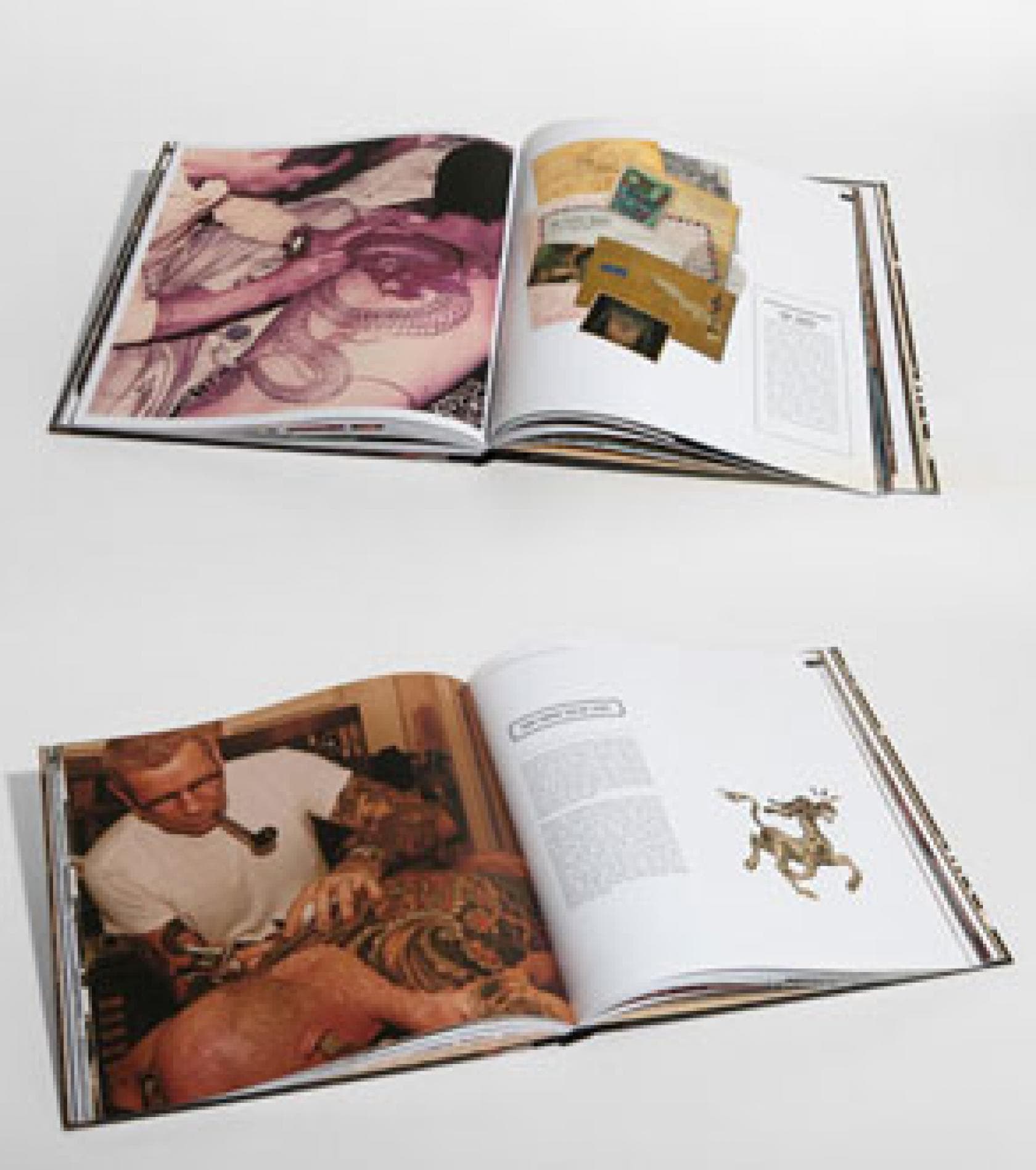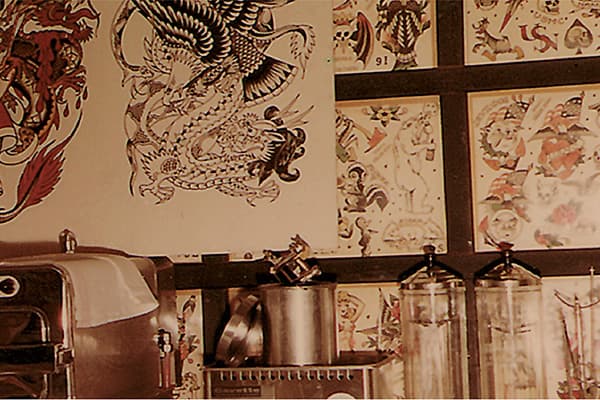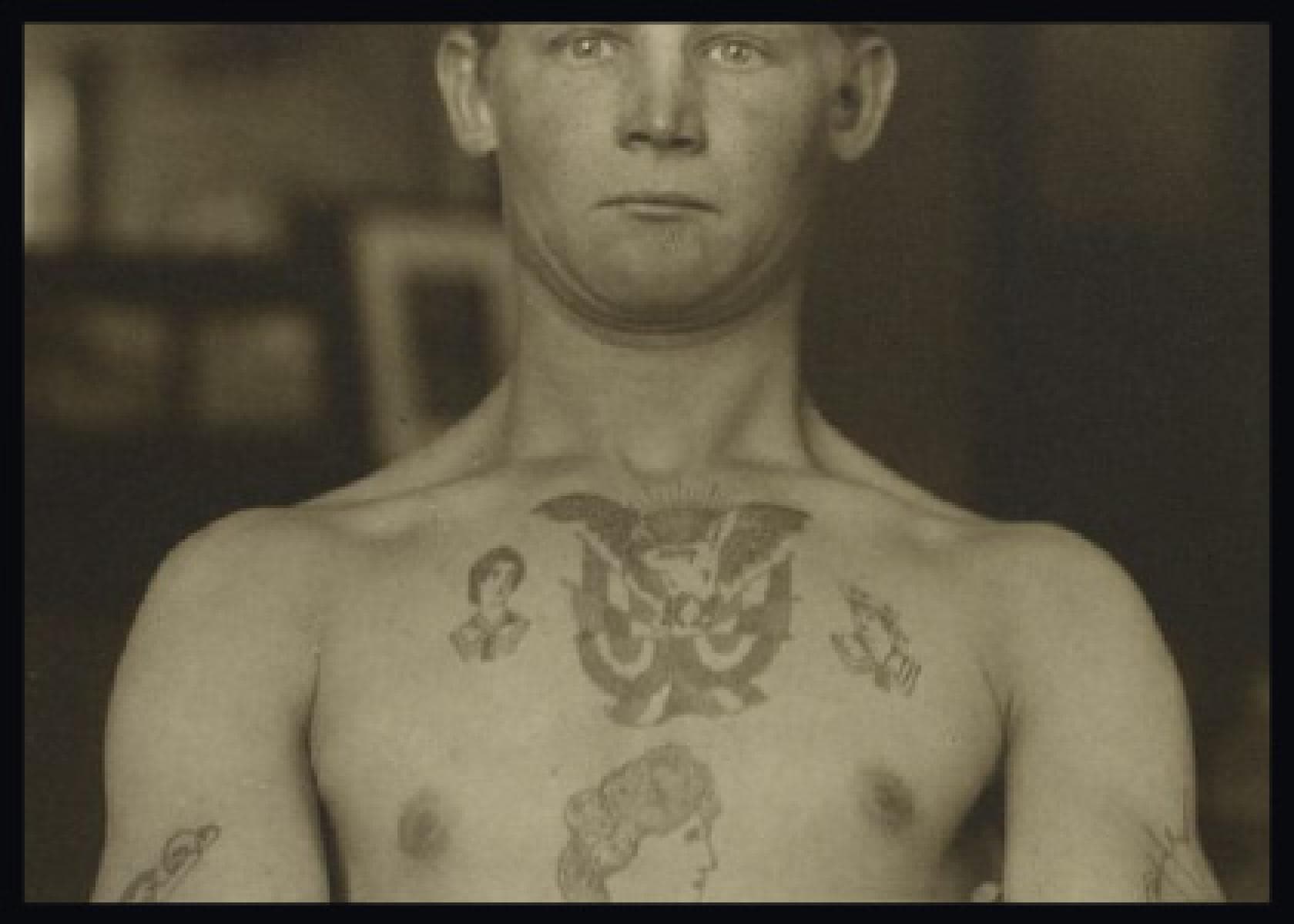HOMEWARD BOUND
The Life & Times Of Hori Smoku Sailor Jerry

Homeward Bound
The Life and Times of Hori Smoku Sailor Jerry explores the life, times and artistic legacy of the father of the old-school tattoo, Norman "Sailor Jerry" Collins. In much the same way as the critically acclaimed cult film, Hori Smoku Sailor Jerry, this limited edition, 128-page, hardbound book uses the life of Sailor Jerry as the conduit to deliver a visual ethnography of American tattooing. Previously unseen photographs include not only rare images of Collins, but also Hawaiian life in the mid-20th century and anecdotes are illustrated with ephemera and essays collected during the making of the film.

Norman "Sailor Jerry" Collins Asian Influence
"The Japanese tattoo tradition serves as the single greatest influence on Jerry's work. His ability to fuse that inspiration into American tattooing sealed Jerry's place as the godfather of modern tattooing. He appreciated that elements of Japanese tattoos, from dragons to cherry blossoms, were based on intricate stories and traditions from Japanese culture. Determined not to blatantly copy these motifs, Jerry planned to base his tattoos around classic American subjects such as General Custer and Washington Crossing the Delaware. More importantly, Japanese tattooers utilized water shading, a practice that involved watering down tattoo ink to create a wider spectrum of shades which, when applied properly, added depth and dimension. Jerry was the first to fuse the Japanese shading technique with bold, American designs and the combination changed tattooing forever."
Excerpt from Homeward Bound
Norman "Sailor Jerry" Collins at Sea
"Jerry's time at sea became the overwhelming influence on his life. He relished the camaraderie of the Navy, and the old sea-faring traditions of the sailor became subjects he celebrated in his work until his death. More importantly, the Navy took Jerry across the Pacific to China and Japan, a journey that sparked his lifelong interest in Asian art and culture and then deposited him in Hawai'i in the early 1930s. The tropical islands felt custom-made for Jerry. The constant flow of sailors through Hawai'ian ports kept Jerry connected to his beloved Navy while Honolulu's bustling Chinatown fed his fascination with Asian culture. Jerry decided to call Hawai'i his home."
Excerpt from Homeward Bound


Norman "Sailor Jerry" Collins the Apprentice
"Jerry first tried tattooing as a teenager by hand-poking designs on willing customers with whatever supplies he came across while hitchhiking and hopping freight trains across America. He landed in Chicago in the 1920s and connected with his first formal teacher, the legendary Gib "Tatts" Thomas, who taught Jerry how to use a tattoo machine. The lesson itself became part of the great Sailor Jerry mythology: Thomas took Jerry to the city morgue where a friend of the tattooer worked the night shift and would allow the young apprentice to practice tattooing on corpses. They led Jerry to a dark room where a cadaver lay covered by a sheet on a table and left him alone with his tattoo machine and inks. Determined not to be spooked, Jerry set up his gear and lifted the corpse's arm when suddenly the body sat upright and screamed, terrifying Jerry. Thomas and his friends laughed hysterically at the joke they had played on the young, severely shaken apprentice."
Excerpt from Homeward Bound
The Rise of Tattooing in America
"By the end of the nineteenth century, tattooing became a sensation, and although most Americans did not have tattoos, it was a subject too prominent to be ignored. The average American stumbled upon a tattooed person in novels and society pages or viewed them at dime museums and carnivals. Between 1875 and 1930, tattooing in America came of age. Commercially minded tattooists began by selling designs and progresses to owning and maintaining supply companies. They also exploited new technology."

